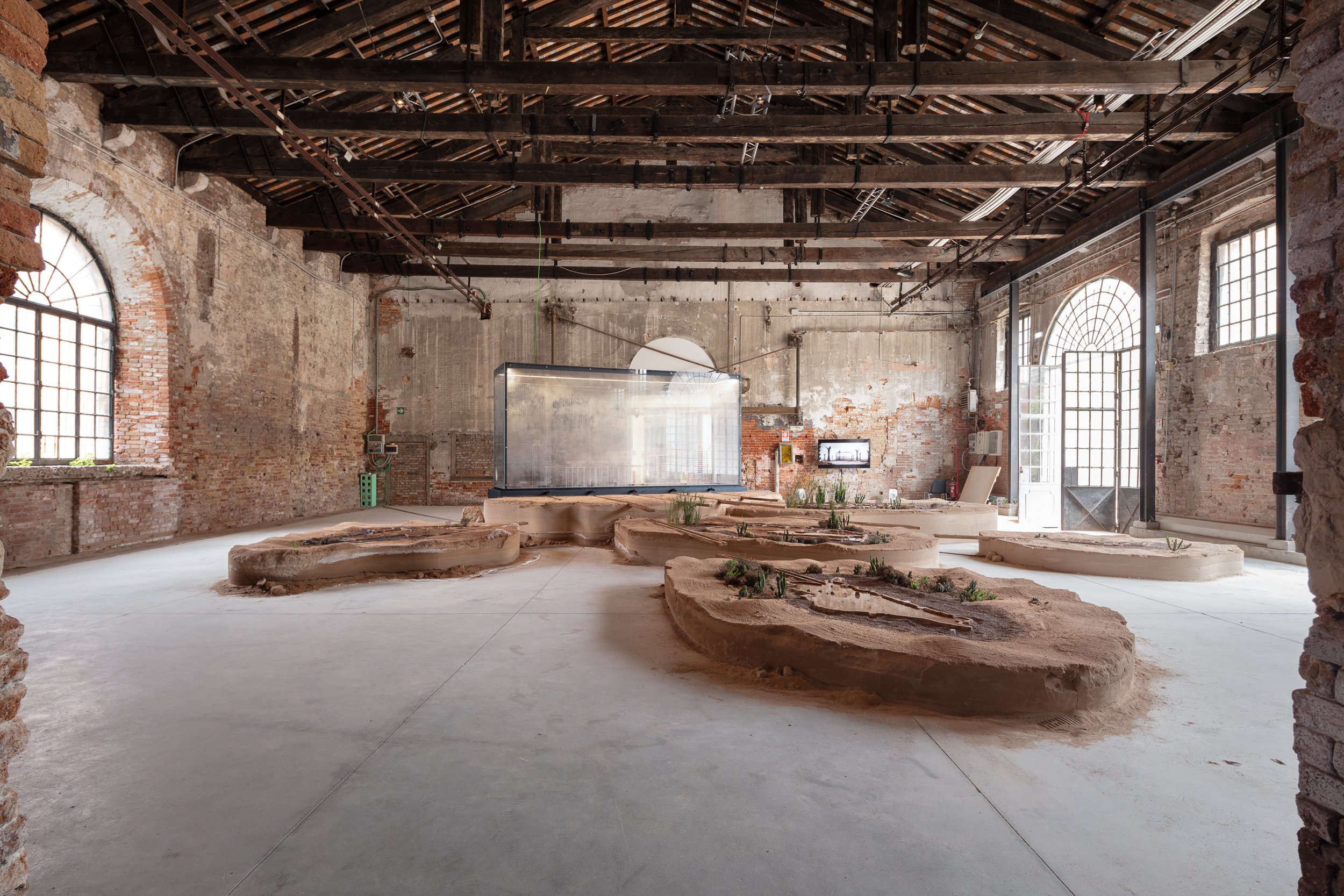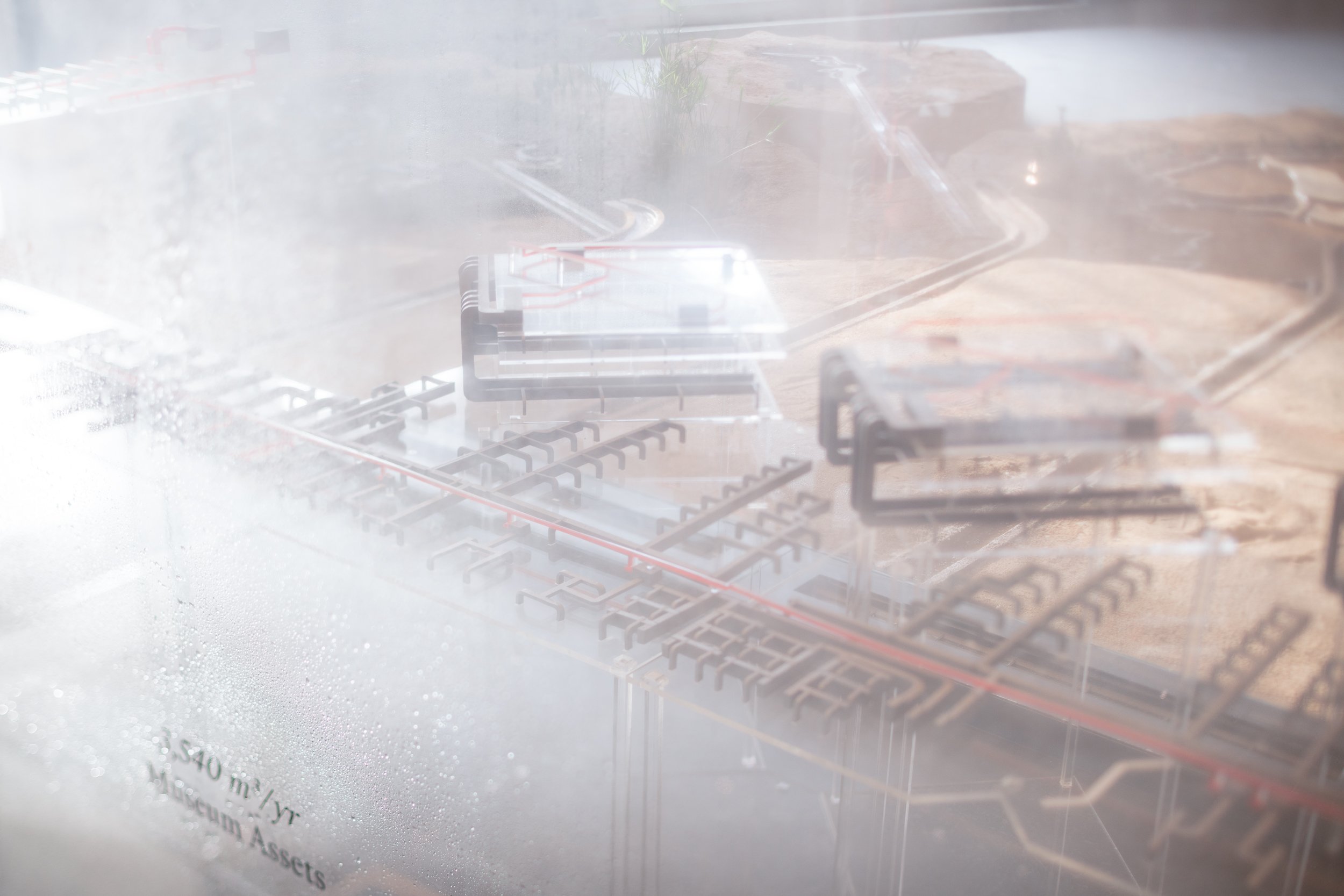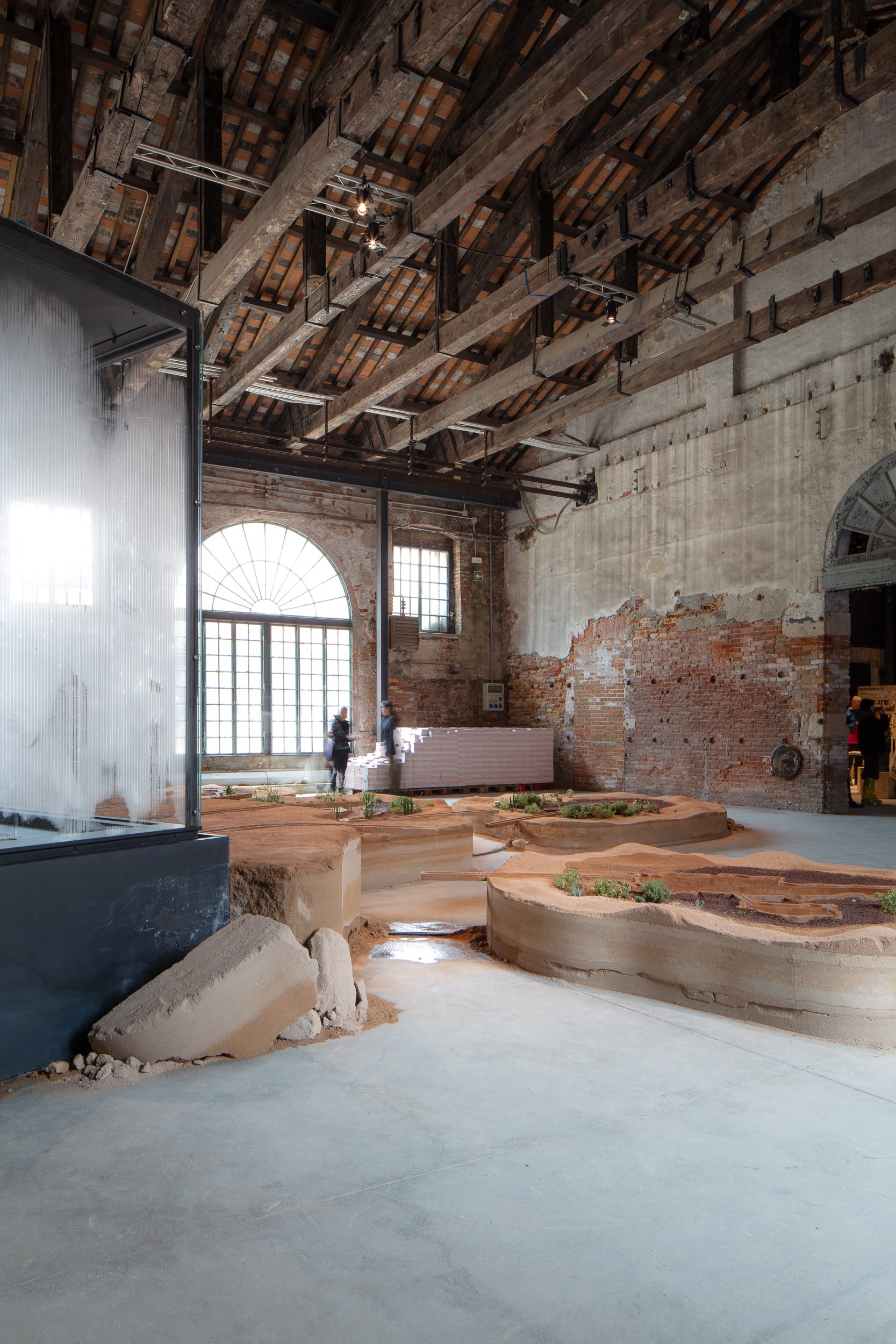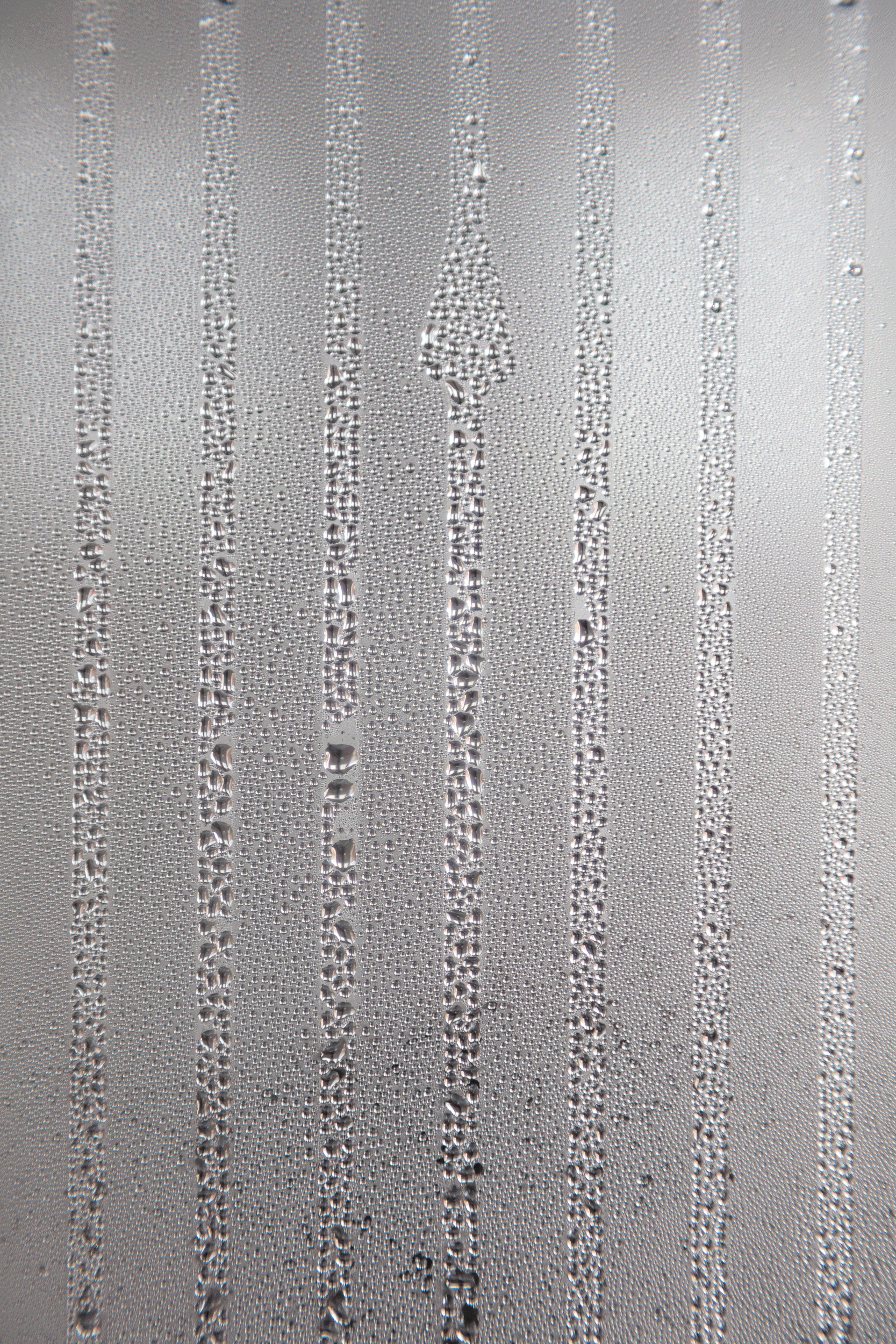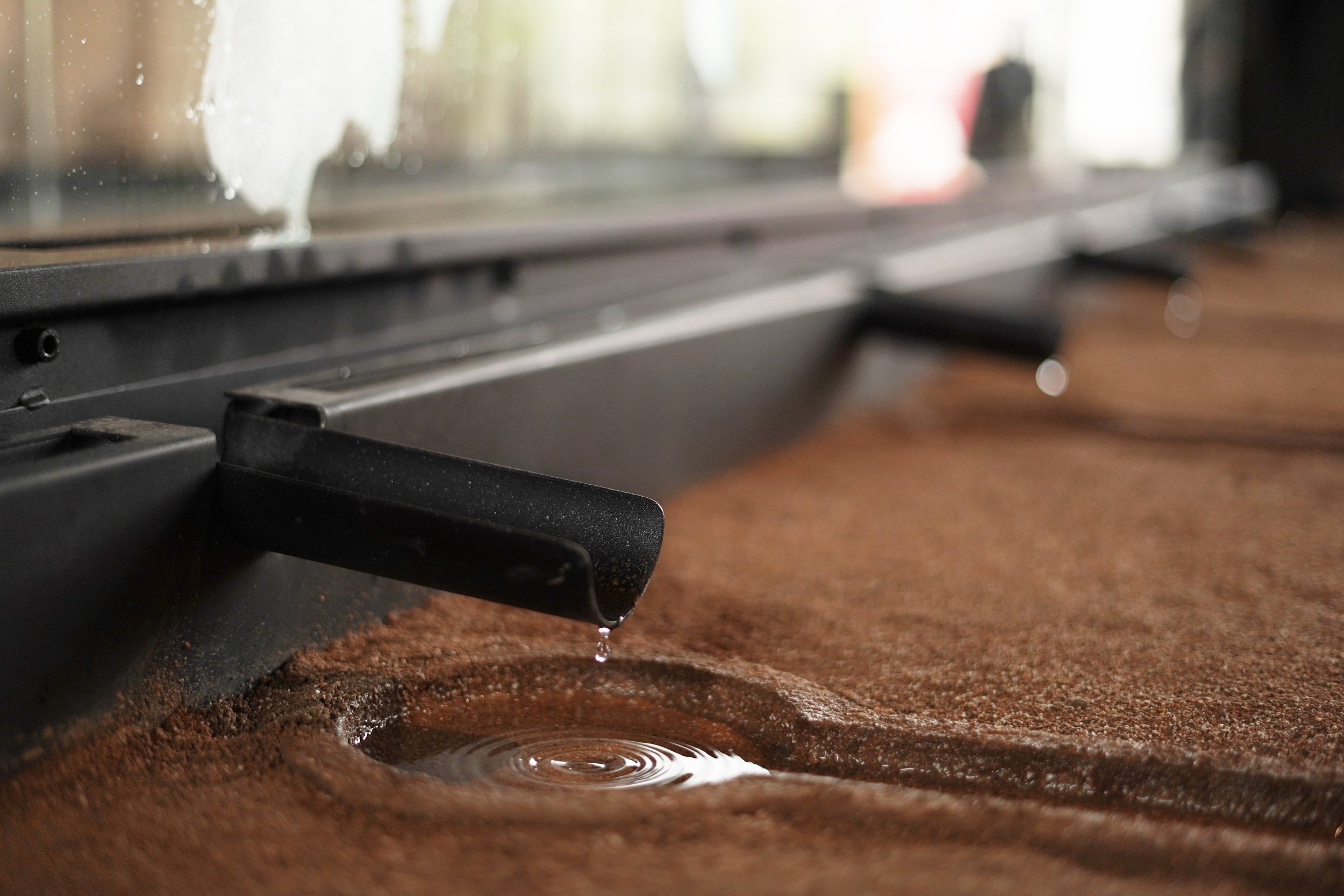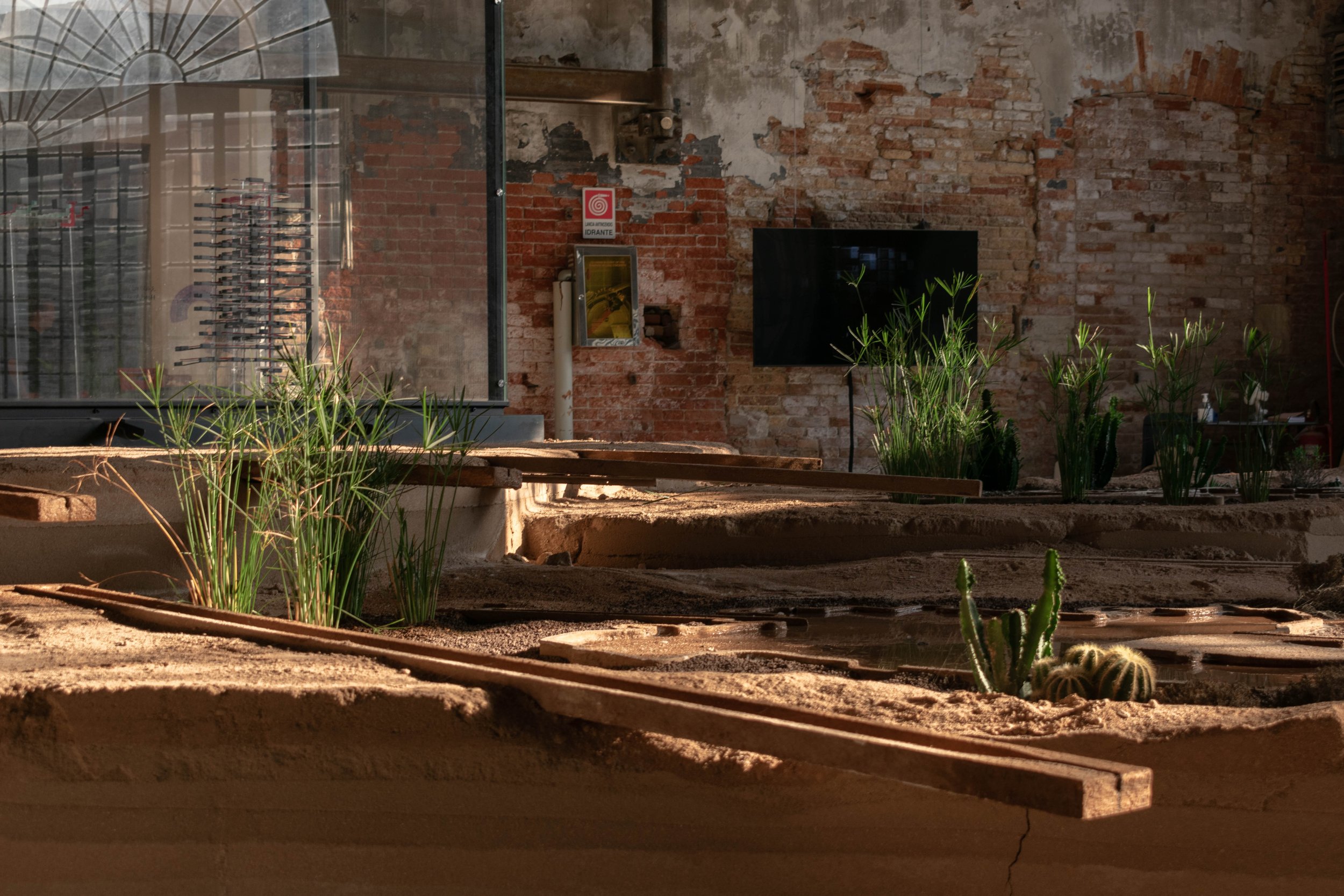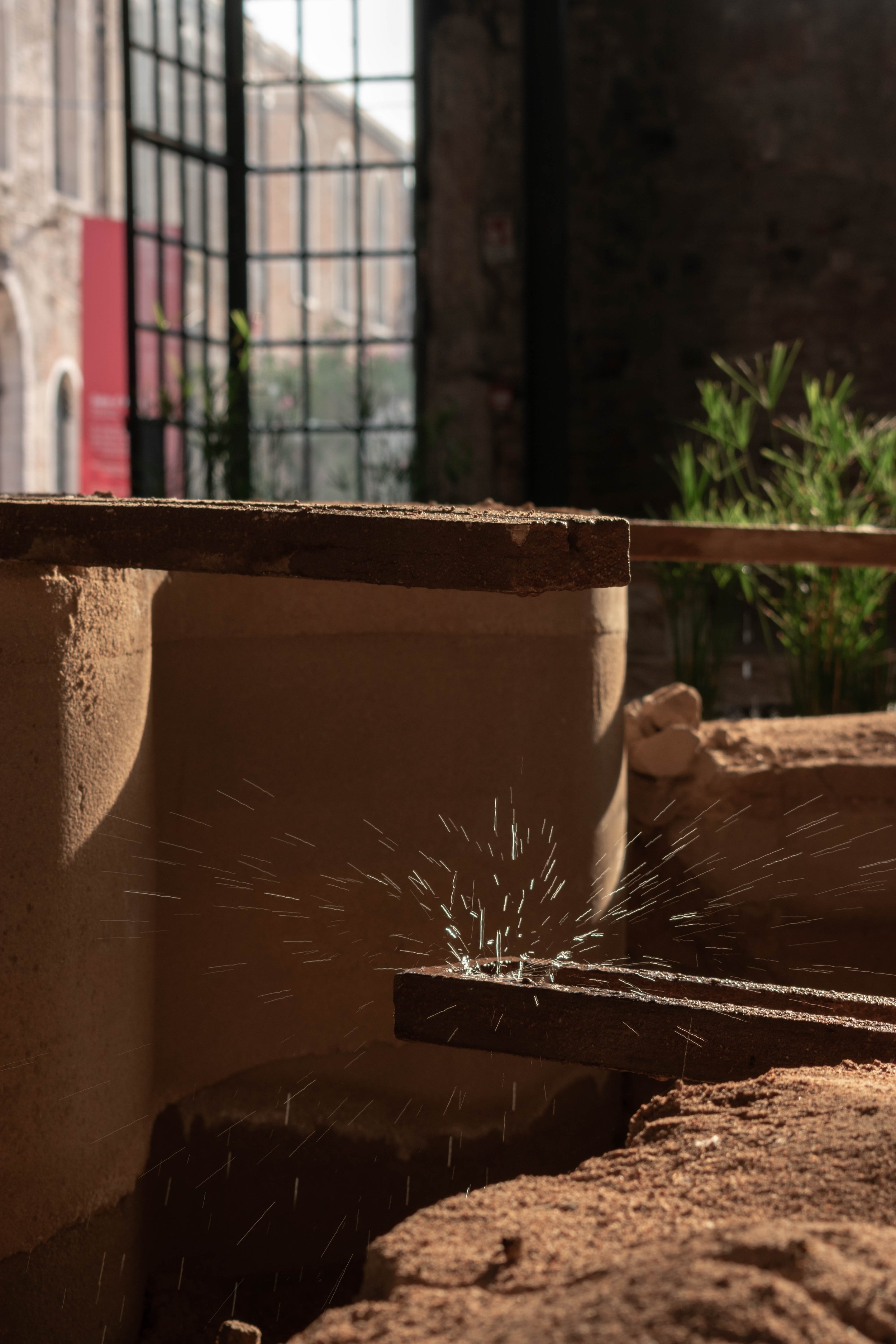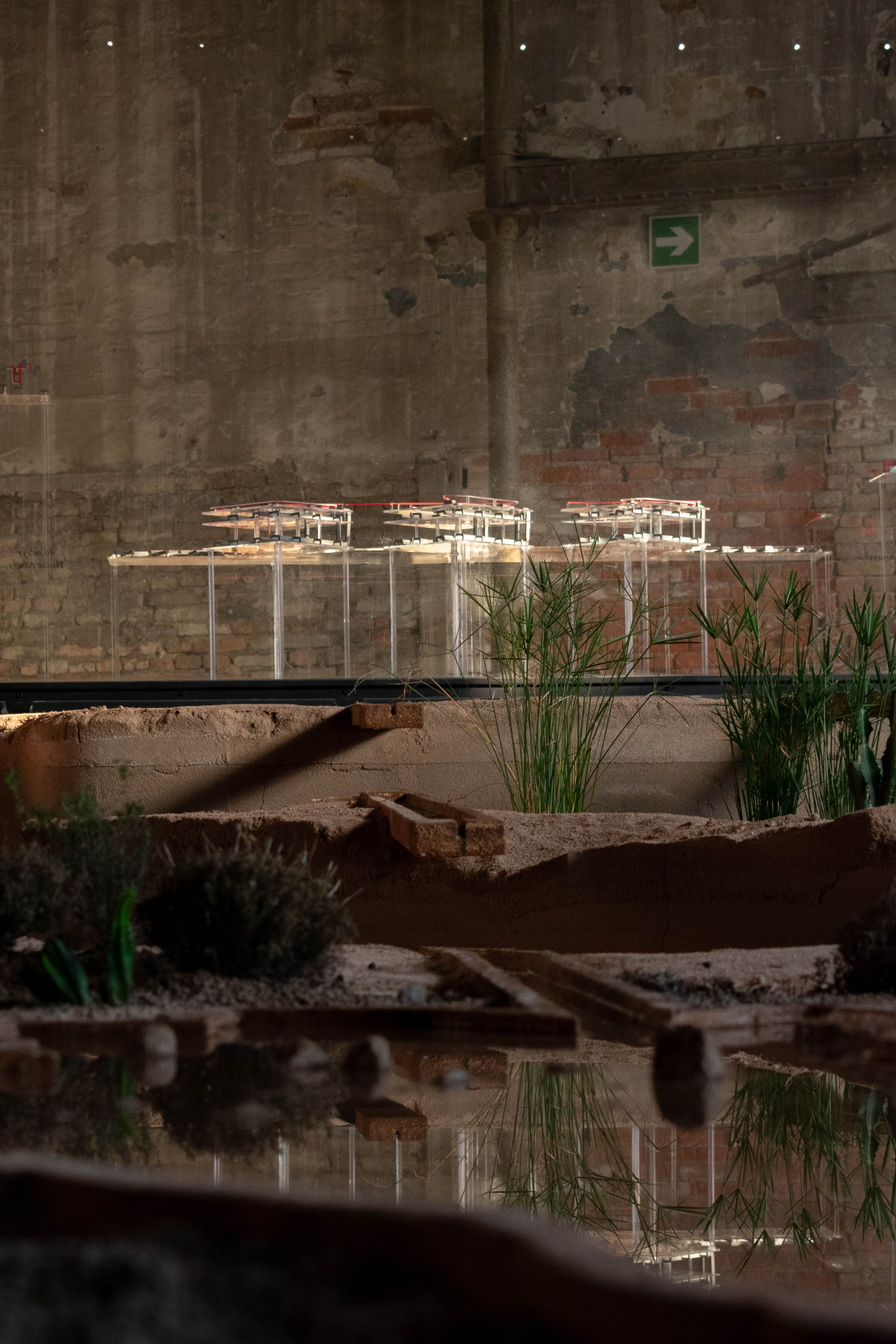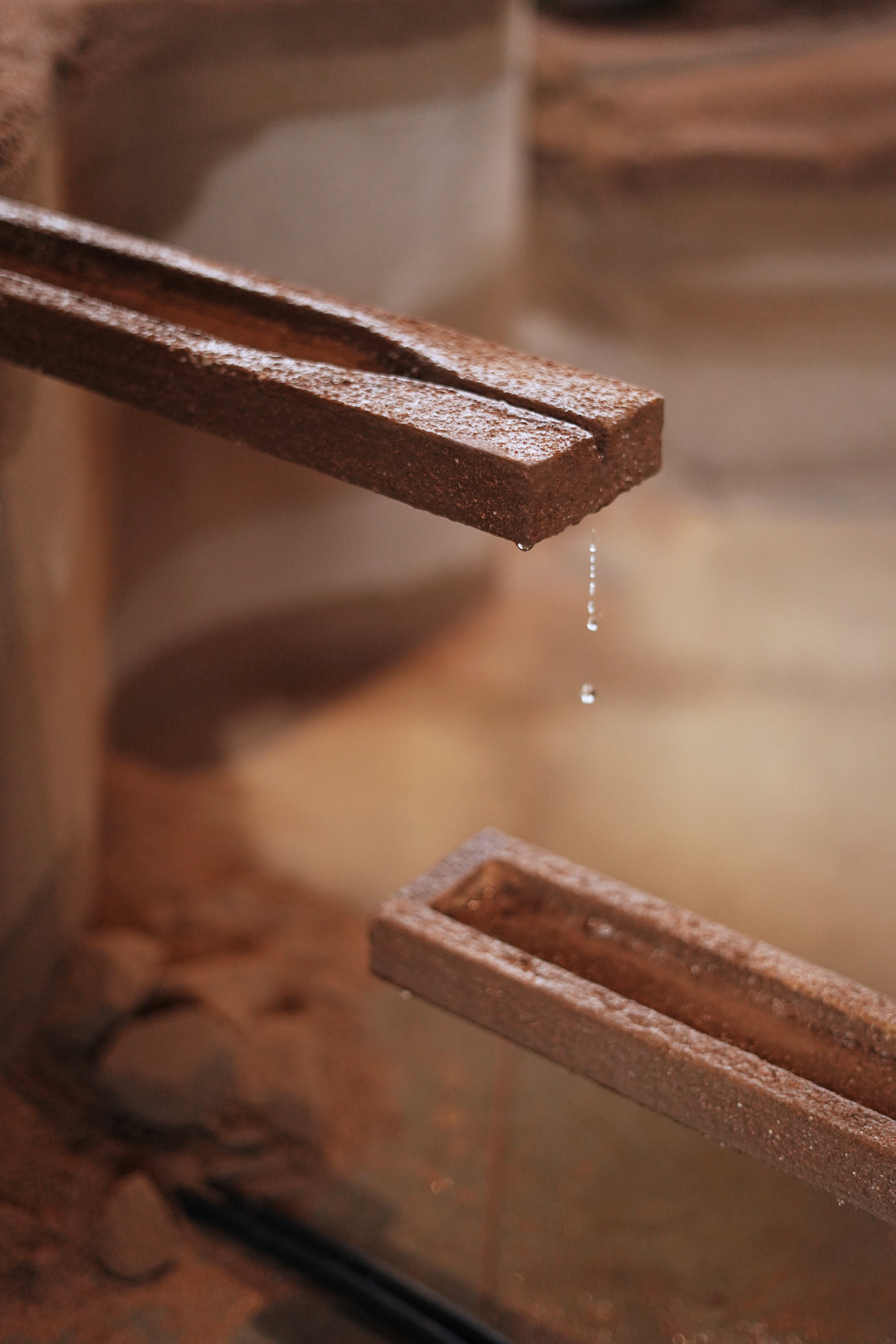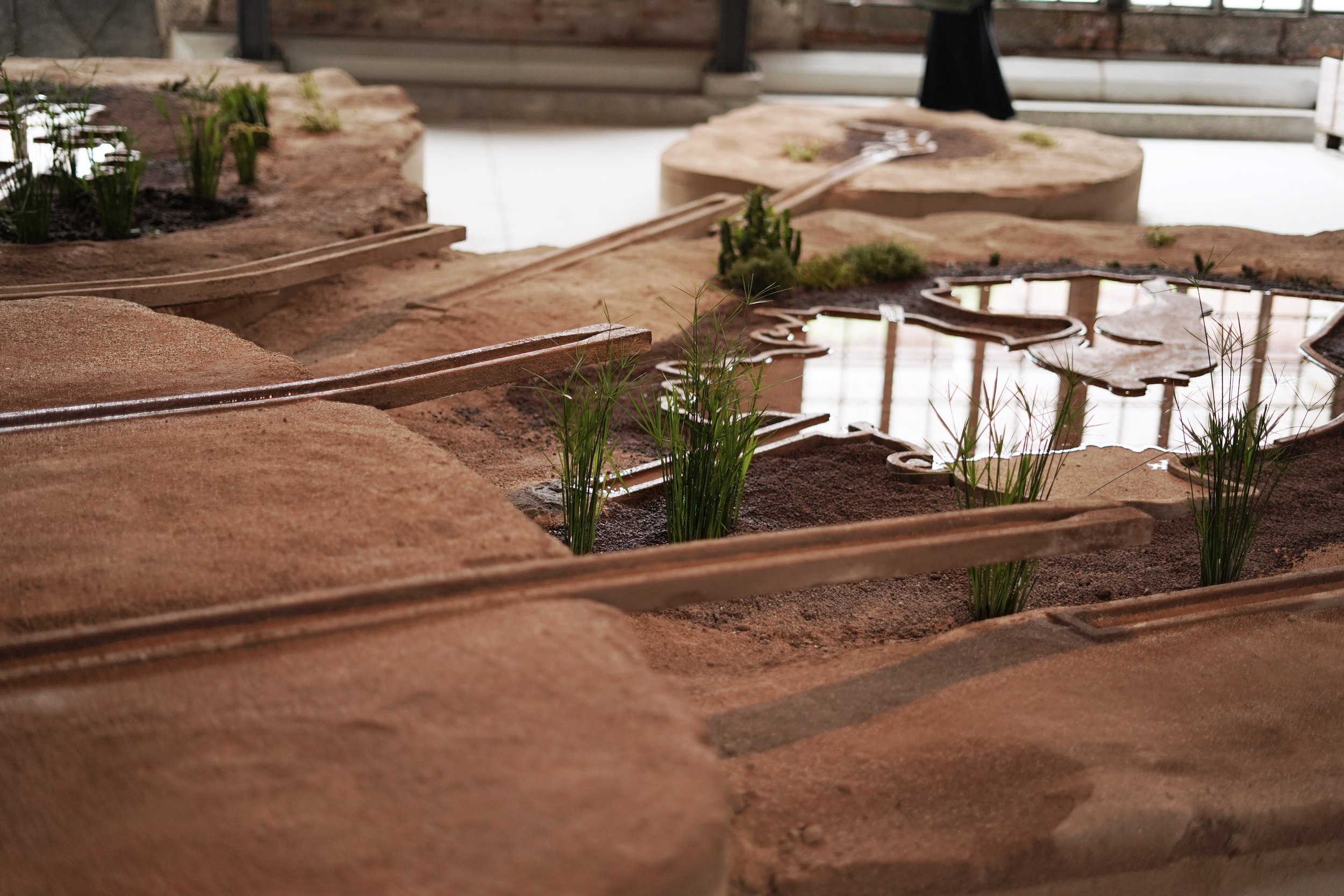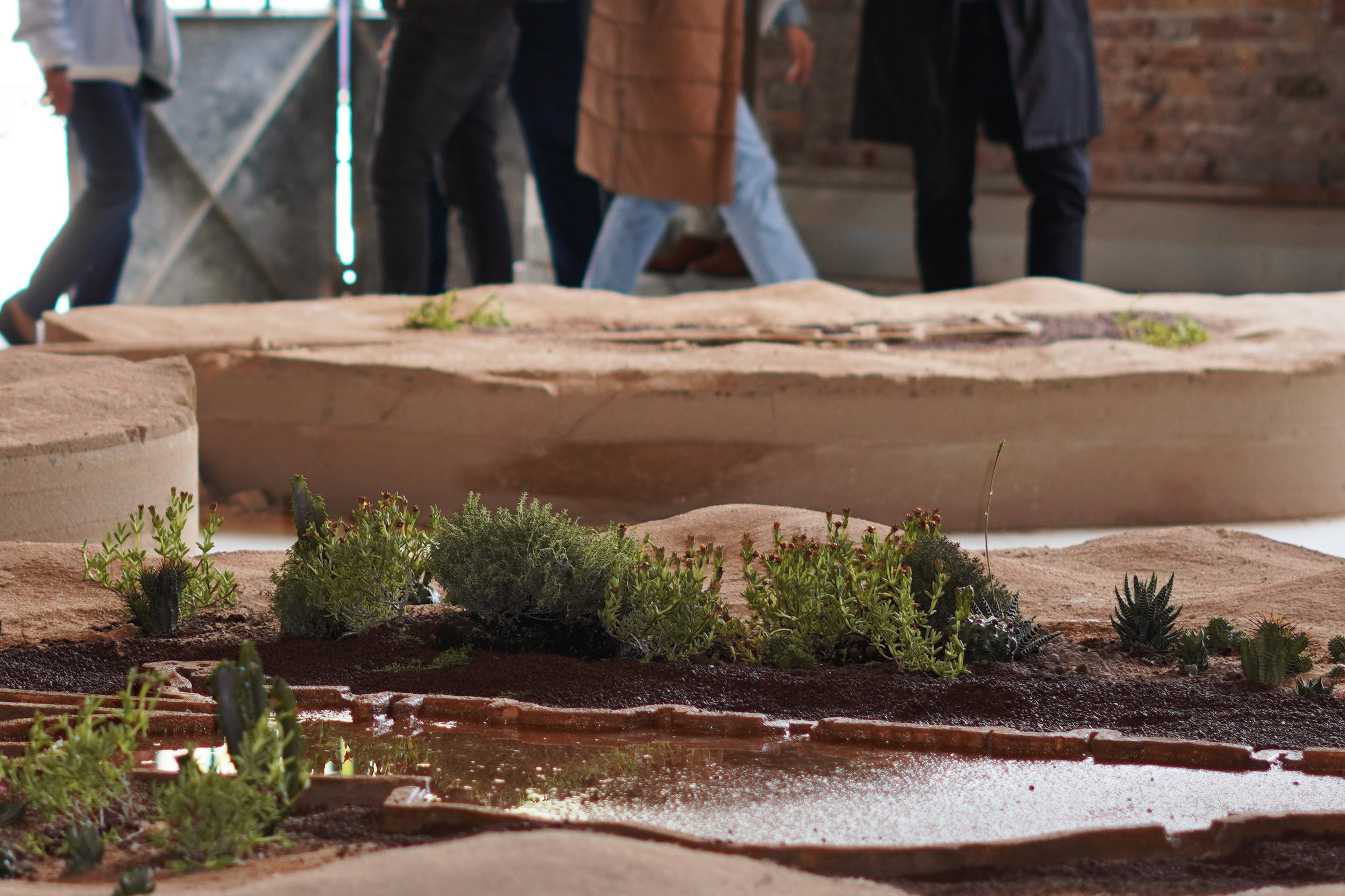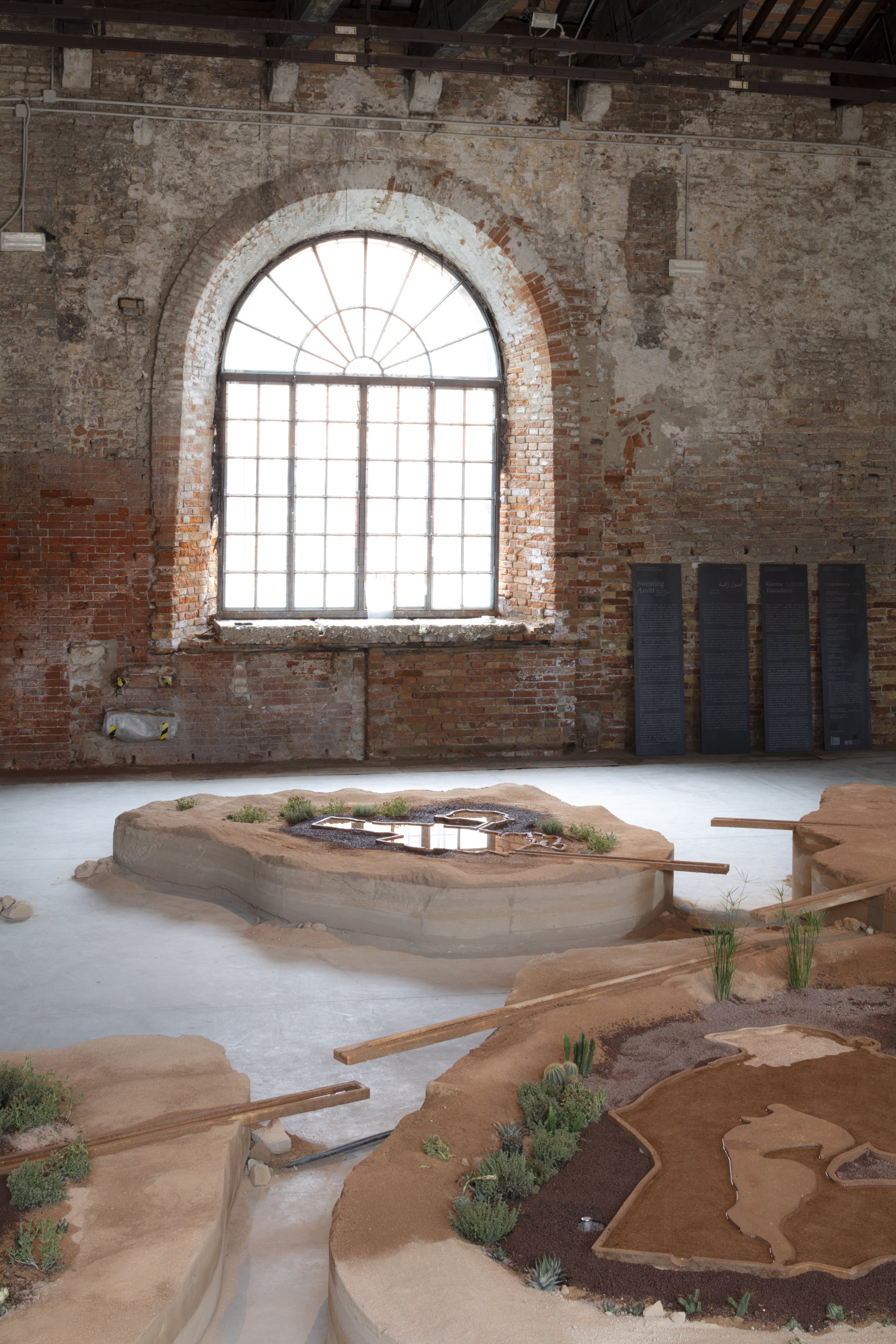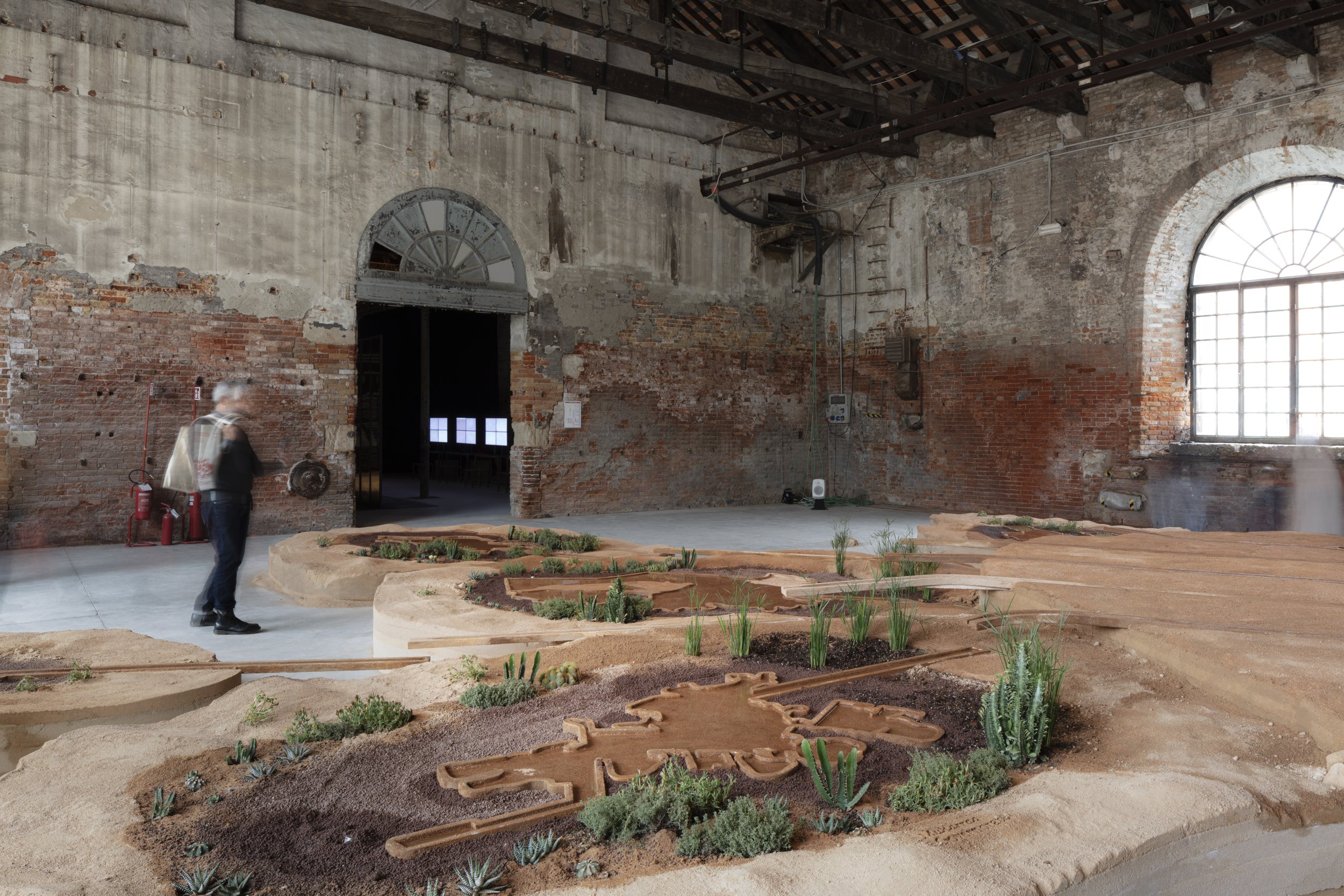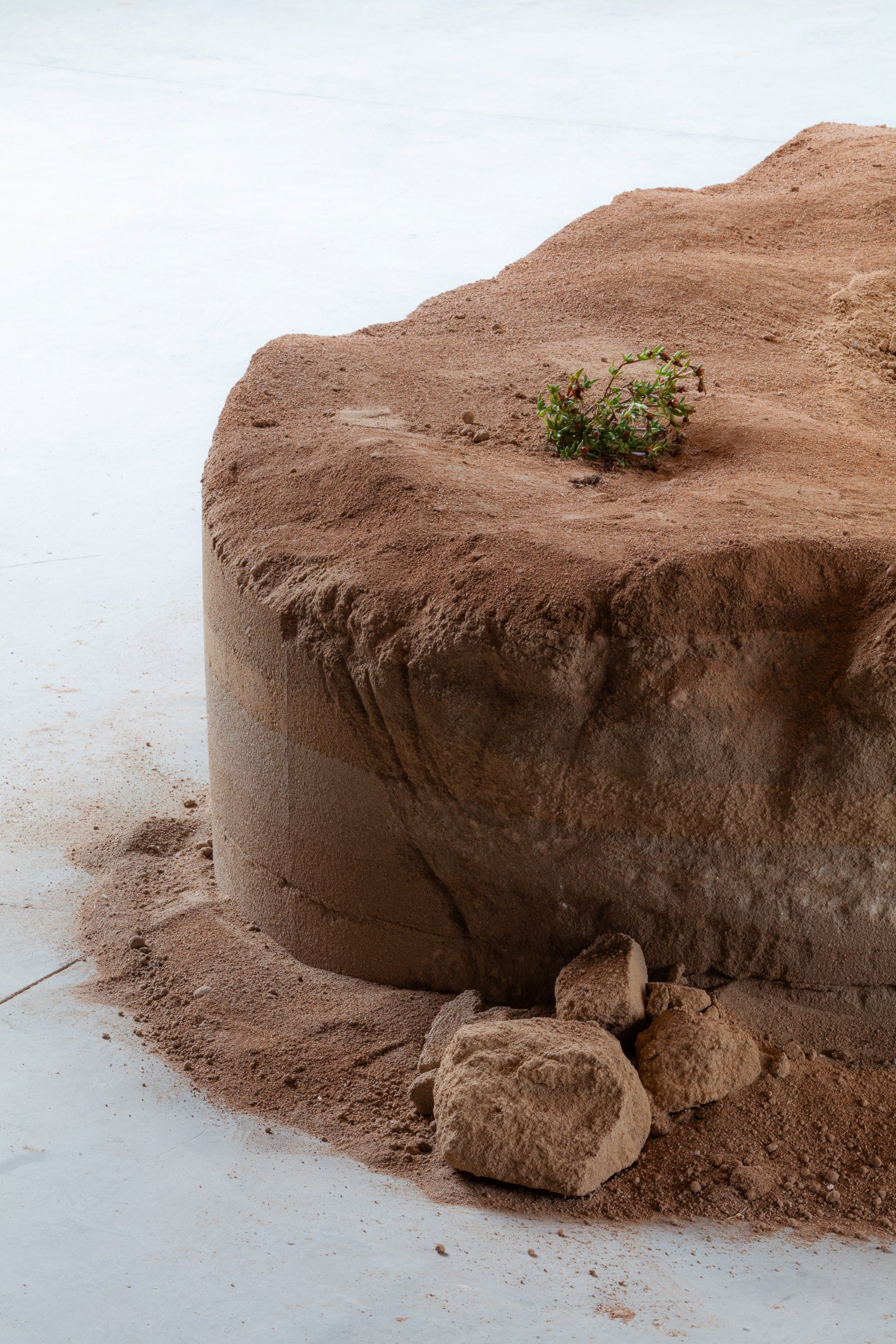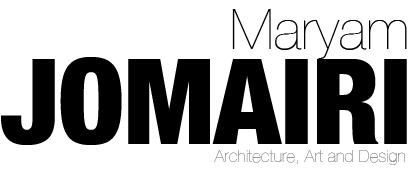Sweating Assets is an adaptive means of resource management that works with existing cooling systems rather than starting anew. The research considers our built environments, infrastructure, and relationships as a complex, resource-rich landscape currently subject to over-consumption. By no means encouraging wasteful usage of air conditioners, it uncovers the possibilities (rather than solutions) made through their inevitable use.
Buildings behave as vessels for condensation. As they comfort and cool, they sweat moisture in two ways. The first is deliberate dehumidification of air entering dwellings. The second occurs unintentionally, as water condenses on the increasing glass surfaces of buildings. When accumulated, condensate reservoirs hold immense potential as a water source. However, as it stands, they are drained in a region that is already water-scarce
Traversing scales—from the domestic to the territorial—the exhibition highlights the position of cooling infrastructure in relation to a wider ecosystem. In the relationship between flora, fauna and cooling units, the air conditioner is often isolated, although climate ties these environments to one another. This link is exemplified by the synchronized demand for cooling and water shared by humans and vegetation across the year, especially during the hot summer months. Just as we perspire, the date palm transpires, and the air conditioner condensates.
In this space, the glass volume is an emblem of the constantly cooled living enclosures. Within it resides four case studies; a house, museum, market, and hotel - each unveiling the intricate infrastructure that transforms buildings into livable shelters. The exhibition’s microenvironment is a choreography of temperature, humidity, and condensation. Supplementing the import of the climate is a call for the collection and rerouting of the incidental condensate reserves towards wetlands and agricultural regions in need of replenishment. Coatings and channels control condensation patterns and water movement. Condensate is led to ‘deposits’ that each represent Bahrain’s governorates, scaled based on quantitative analysis of the cooling they consume and subsequent condensate they produce.
Bahrain Pavilion at the Venice Architecture Biennale, 2023
Commissioner
HE Shaikh Khalifa bin Ahmed Al Khalifa
Deputy Commissioner
Noura Al Sayeh-Holtrop
Pavilion Coordinator
Batool Al Shaikh
Curation, Design, and Research Lead
Maryam Aljomairi & Latifa Alkhayat
Exhibition Contributors
Zhicheng Xu, Landscaping
Natalie Pearl, Hydrophobic Coating Design
Shan-Chun Wen, Pattern Production Drawings
Melad Alfulaij, Alya Alaam, Model Production Drawings
Hsin-Ying Huang & Yi-Liang Ko, Lighting Design
Saleh Jamsheer, Film
Vijay Rajkumar, Sound
Aeris Group, HVAC Consultation
Tosetto, Installation Execution
Fablab Venice, Physical Models
